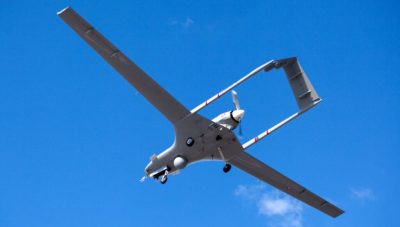
On June 1, 2025 Ukraine launched an attack using small drones targeting Russian bombers meant to deliver nuclear weapons or capable of this. This was called ‘Spider’s Web’ by Ukraine and reportedly had been planned and its preparations made for 18 months. While there are different views on the exact damage caused by them, many experts feel that this has raised warfare risks in dangerous ways. Prof John J. Mearsheimer, whose views on Ukraine-Russia war have been very widely sought and followed for several years, has stated,
“This is playing with fire, since the United States almost certainly was involved in the operation, given how dependent Ukraine is on US intelligence, not to mention the fact that Washington routinely advises Ukraine in its military operations.”
He has further stated,
“It was unthinkable during the Cold War to even countenance striking the Soviet’s strategic nuclear forces unless there was a major crisis like the Cuban missile crisis in 1962. Why? First, there was the fear of immediate nuclear escalation. Second, even if there was no escalation right away, the United States would have signaled to the Soviets that it was willing to pursue an extremely risky strategy that might cause Soviet leaders to think Washington was preparing for a splendid first strike. In a future crisis, this would be highly destabilizing. Fortunately, Ukraine did not destroy a large portion of the Russian bomber force, although that was its goal. One wonders what American policymakers were thinking.”
A senior academic Julian de Troullioud de Lanversin has been researching on developing scientific methods and policy solutions to reduce the risks of nuclear technologies. He has contributed several thoughtful articles to the Bulletin of Atomic Scientists on this and related issues. On June 5 his paper on the attack on Russian bombers was published which has attracted a lot of attention and comment. This paper is titled ‘Ukraine’s attack on Russian bombers shows how cheap drones could upset global security’. As this title itself shows, the writer feels strongly that such an attack has very wide and significant implications for security and safety.
Describing the drone operation Lanversin has written that more than a hundred first person view drones were secretly shipped inside containers on commercial trucks sent toward locations deep inside Russian territory, nearby highly sensitive military airfields.
“With just a click from operators based in Ukraine, all containers’ roofs simultaneously opened, and drones navigated to their targets to unleash destruction. Several of Russia’s most critical and advanced strategic nuclear-capable bombers were damaged in this attack.”
The drones were likely 13-15 inches in length and developed and assembled in Ukraine at a cost of around $800 or so. Each drone likely carried an explosive payload of about 3.2 kilograms and detonated on impact with the targeted airplanes.
On the significance of this attack and how this can be seen as a game-changer, Laversin writes,
“The June 1 Spider Web operation likely marks the largest attack on a nuclear-armed state’s nuclear assets to date, one that was executed using laptop-sized drones. It also stands as the most significant demonstration of drones’ ability to penetrate deeply into heavily defended territory with significant strategic impact… Historically, only major nuclear powers had effective means to inflict damage on the nuclear capabilities of other major powers. And for most nuclear-armed states, an attack on their nuclear capabilities, even a conventional one, called for nuclear retaliation. To avoid nuclear escalation, nuclear powers have carefully crafted doctrines, strategies, and agreements between themselves to create predictability and increase strategic stability. But to a certain extent, this system of balance was not designed with the expectation that smaller actors could threaten critical nuclear assets of the nuclear-armed states. Smaller states with no nuclear capabilities and less familiar with the game of strategic stability, like Ukraine, might not fully realize the direct or indirect risk of nuclear escalation that their drone operations could entail. More alarming, non-state actors could also potentially actively seek to initiate a nuclear escalation between nuclear adversaries with drone-enabled false flag operations.”
Laversin further discusses the kind of regulation that may be increasingly needed in future. He argues,
“Discussions around drone regulation in war often centre around their ethical uses and their level of AI-powered autonomy, which are certainly crucial issues to tackle. But states must also recognize the highly disruptive impact that cheap and widely accessible drones can have not only on warfare but on global security and stability. One way forward is to implement strict export control and purchase regulations on small drones, such as those implemented for small firearms. Such policies will inevitably collide with the booming industry and market of small, cheap drones that are increasingly popular for commercial purposes and leisure activities. But states will need to work on some form of control of drone export and weaponization, lest they are willing to risk more nuclear crises.”
A crucial message coming from this review is—
“Drones will wreak havoc on global security, if nobody controls their proliferation.”
*
Click the share button below to email/forward this article. Follow us on Instagram and X and subscribe to our Telegram Channel. Feel free to repost Global Research articles with proper attribution.
Bharat Dogra is Honorary Convener, Campaign to Save the Earth Now. He is a regular contributor to Global Research.
Global Research is a reader-funded media. We do not accept any funding from corporations or governments. Help us stay afloat. Click the image below to make a one-time or recurring donation.

Comment on Global Research Articles on our Facebook page
Become a Member of Global Research
Source link

